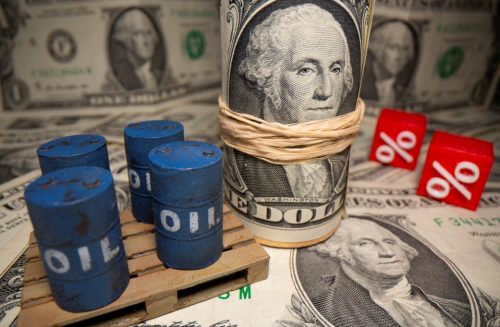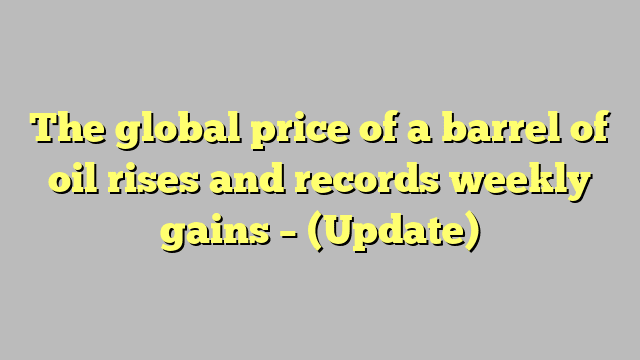The price of a barrel of oil rose globally by more than 1.5%, at the end of trading today, Friday, January 20, 2023, to reap weekly gains for the second time in a row.
This is largely driven by China’s bright economic prospects. This will boost fuel demand in the world’s second largest economy.
The weekly report of Baker Hughes showed that the number of oil drilling rigs in the United States decreased by 10 rigs during the past week, bringing the total to 613 rigs.
The global price of a barrel of oil today
At the end of the session, the price of benchmark Brent crude futures – for delivery in March 2023 – rose by about 1.7%, to $87.63 a barrel.
The price of US West Texas crude futures – February 2023 delivery – increased by 1.2%, to $81.31 a barrel, according to data seen by the specialized energy platform.
Oil prices ended their dealings, yesterday, Thursday, January 19, with an increase of more than 1%, near the highest closing levels since December 1, amid fears of declining supplies.
Both benchmarks (Brent and West Texas Intermediate) achieved weekly gains of about 2.7% and 1.8%, respectively, during the week ending today.
Chinese demand
Yesterday, Thursday, data from the Joint Organizations Data Initiative showed that Chinese oil demand rose, in November, to the highest level since February.

The Organization of the Petroleum Exporting Countries (OPEC) said on Tuesday that Chinese oil demand will rebound this year due to the easing of COVID-19 restrictions in the country and a boost to global growth.
For his part, the head of the International Energy Agency, Fatih Birol, said on Thursday that the recovery of the Chinese economy and the struggles of the Russian oil industry in light of the sanctions may affect the supply of energy markets during 2023.
interest rates
The price of a barrel of oil globally also received support from hopes that the US central bank will soon end the monetary tightening cycle.
New York Fed President John Williams said on Thursday that the US central bank is seeing signs of inflationary pressures slowing from tense levels.
According to most economists, in a Reuters poll, the Fed will end the tightening cycle after raising 25 basis points at each of its next two policy meetings, and then likely keep interest rates steady for at least the rest of the year.
A number of other Fed officials have expressed support for a downward shift in the pace of rate hikes.
Oil market conditions
“The world’s two largest economies need more crude oil,” said Edward Moya, senior market analyst at OANDA, according to Reuters.
He added, “The price of a barrel of oil has declined globally due to global recession fears, but there are still signs that the oil market can remain tight for a little while longer.”
The price of a barrel of oil globally also received support from the decline in the dollar index, which was heading for a second consecutive weekly decline.
A weaker dollar makes crude oil, priced in the currency, cheaper for foreign buyers.
“Oil traders are likely to buy dips now, amid optimism about China and the US,” said CMC Markets analyst Tina Ting.
related topics..
Also read..

Leave a Reply